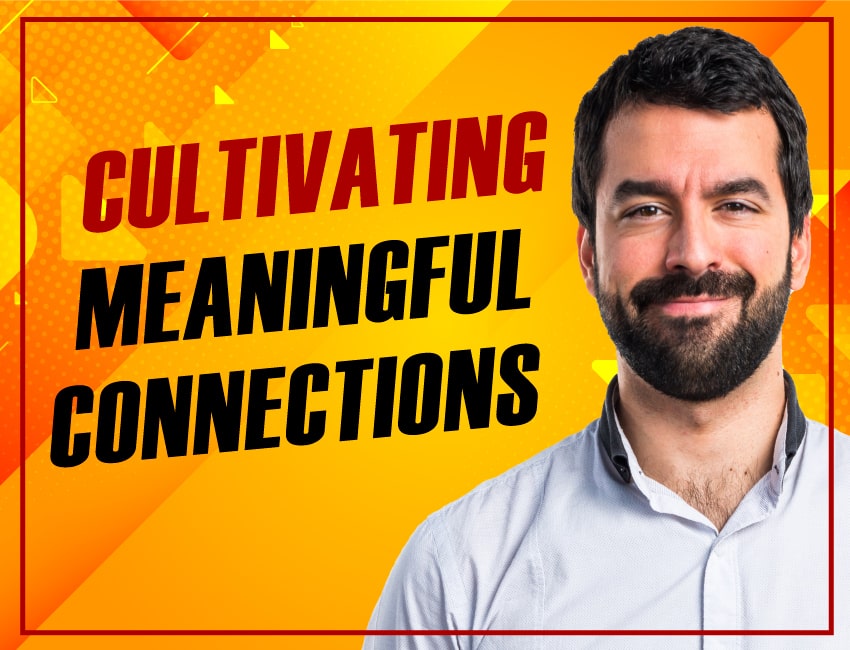Mastering The Art Of “I-statements”

Transform your language, transform your relationship.
- “Why are you such a slob? You always leave your stuff everywhere for me to clean up.”
- “You’re constantly working, and you don’t make time for us as a family.”
- “You have no sense of budgeting. You act like money just grows on trees.”
Sound familiar? Arguments about household chores, work-life balance, and finances are common sources of tension in relationships. That’s why mastering the art of “I-statements” is crucial. The language you use during a conflict can make or break your relationship. Changing the words you use can change the course of your life, especially when it comes to relationships.
Even with the best of intentions, the words we use can often escalate a disagreement into a full-blown fight and cause hurt to the people we love. One of the most common mistakes people make in relationships is using “you-statements” instead of framing their statements as “I-feel statements.”
What Is a “You-Statement”?
“You-statements,” like the examples above, start with the pronoun “you” and place blame on the listener. They do not take ownership of emotions and often sound accusatory. These types of statements can put your partner on the defensive and make it harder to find common ground.
What Is An “I-Statement”?
An “I-statement” requires us to take responsibility for our feelings and prevents us from placing blame on our partner. Using “I-statements,” we can still assert our needs while communicating in a more compassionate and less hostile way. The tone of voice we use is also essential to effective communication, and “I-feel statements” can prevent miscommunication that may arise when using an accusatory tone of voice.
The Psychology Behind “You-Statenents” and “I-statements”
Research has shown that “I-statements” decrease hostility and defensiveness, while “you-statements” can provoke anger. The use of “I-statements” in relationships and even in the workplace has been proven to lead to better communication. But why?
“You-statements” can make your partner feel punished, causing them to become defensive. This response is a natural defense mechanism we have hard-wired in our DNA. Pointing out what they have done wrong or how they have made you feel can make your partner feel as bad as you do or make them change their behavior. Neither approach creates a healthy relationship, and it often leads to anger instead of resolution.
“I-statements” hold the speaker accountable for their feelings. They convey that while your partner may not be acting or speaking in the way you prefer, you do not blame them for how you feel. By taking responsibility for your part in the disagreement, you display openness to deep listening and finding a solution.
Crafting Effective “I-statements”
How can you turn a “you-statement” into an “I-statement”?
Remember that the purpose of an “I-statement” is to express how you feel. These statements are often referred to as “I-feel statements” because they use specific emotions such as joyful, anxious, lonely, resentful, angry, calm, embarrassed, fearful, and more.
Avoid using words that may sound like emotions but actually imply your partner’s actions, such as “I feel ignored,” “I feel annoyed,” “I feel cheated,” and so on.
It’s also essential to understand that adding “I feel” to a “you-statement” does not make it an “I-statement.” For example.
“I-statements” Examples That Can Improve Your Communication
If you struggle with communicating your feelings effectively, using “I-statements” can be a game-changer. Here are some examples that can help you get started:
- “I feel neglected when we don’t spend quality time together.”
- “I get worried when you don’t call me when you’re going to be late.”
- “I felt hurt when you made that joke about me in front of our friends.”
- “I feel disrespected when you interrupt me while I’m speaking.”
- “I get frustrated when you don’t clean up after yourself in the kitchen.”
Improving Your Communication With “I-statements”
Using “I-statements” is an effective way to communicate your feelings without blaming or attacking your partner. However, it may take some practice to master this technique. To get started, explain to your partner that you’re trying to improve your communication skills and ask for their patience and support. Remember to use a calm tone of voice and be specific about your feelings. Here are some examples of how to turn a “you-statement” into an “I-statement”:
- “You never listen to me” becomes “I feel ignored when I don’t feel heard.”
- “You always make me feel bad” becomes “I feel hurt when my feelings are dismissed.”
- “You are so selfish” becomes “I feel unimportant when my needs are not considered.”
Using “I-Statements” In Therapy To Improve To Improve Emotional Awareness
“I-statements” are not just useful in personal relationships; they can also be beneficial in therapy. Person-centered therapy, pioneered by Carl Rogers and popularized by his student Thomas Gordon, places a strong emphasis on exploring and expressing one’s feelings. Therapists often use “I-statements” to help their clients identify and process their emotions. By using “I-statements,” you can learn to take responsibility for your own feelings and develop greater emotional awareness. This can help you make more conscious decisions and lead a more fulfilling life.
In couples therapy, “I-statements” are a vital tool for resolving conflicts and improving communication. By using “I-statements,” you can express your feelings without attacking or blaming your partner, which can help to de-escalate tense situations. Additionally, “I-statements” can help your partner understand your perspective and develop greater empathy for your feelings. With practice, you and your partner can build a more positive and fulfilling relationship.
Learning to use “I-statements” may take some time and effort, but the benefits are clear. By improving your communication skills and developing greater emotional awareness, you can enhance your personal and professional relationships and live a more fulfilling life.

















